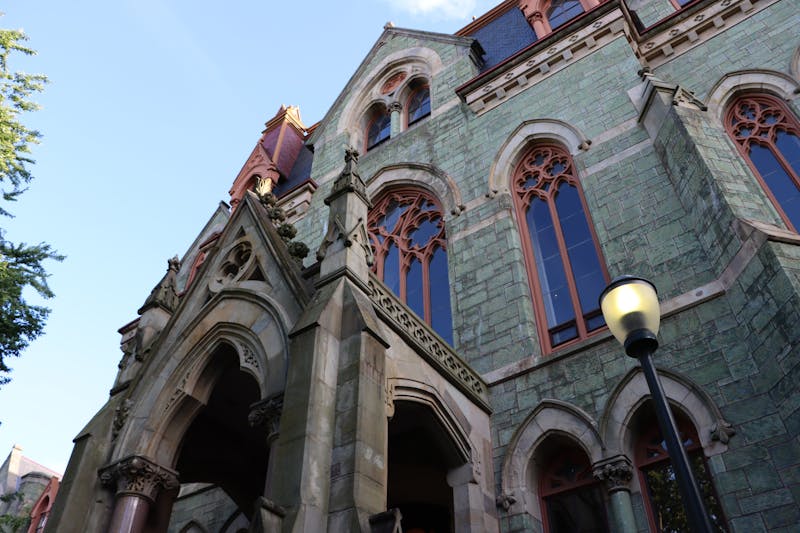While a national health campaign is encouraging people to detect cancer at an early stage, a team of Penn scientists is working to make the detection process cheaper and less intrusive. Physics Professor Arjun Yodh and Biophysics Professor Emeritus Britton Chance are working with advanced imaging techniques that can essentially look "through" the body's outer layers to find, among other things, tumors that are inside human tissue -- without having to put the patient through a painful biopsy procedure or an expensive MRI exam. Yodh, Chance and their team of researchers use light just above the infrared wavelength -- called near infrared, or NIR light -- to learn about the inner composition of tissues. Unlike light on the upper end of the spectrum, this type of light doesn't get absorbed by the tissue as quickly -- thus allowing researchers to detect what is inside the tissue itself. "It provides a whole new set of tools for clinicians as well as basic scientists to look at the relationship between [molecular structure and function] in tissues," said Bruce Tromberg, a professor of Physiology, Biophysics and Biomedical Engineering at the University of California at Irvine. According to Tromberg, who also heads the Laser Microbeam and Medical Program at the Beckman Laser Institute in California, the optical imaging represents a faster, more portable and cheaper way to gather information about the body's hidden activities. Tromberg noted that currently, to perform a state-of-the-art MRI exam, a doctor must first buy the machine for upwards of $1 million and then charge $1,000 each time he uses it. But, he said, doctors can get the same result from Yodh's optical scan at a fraction of the cost. Besides the cost benefits Chance said the imaging technique is much more patient-friendly than other methods. "Is there any other way to diagnose [certain ailments]? Sure, we take a hunk of you, a biopsy, and not many people like biopsy," Chance said. "We're non-invasive, that's why they come to us -- to see whether they need a biopsy." Chance pointed out that the technique has social implications as well. "[Optical breast cancer detectors] can be made cheaply and affordably, and it's portable," he said. "There are a lot of people? economically deprived or opposed to an X-ray, who don't get examinations [but] might be encouraged to get examinations." Recently, Yodh has been working specifically on identifying tumors in breast tissue, research that could lead to a new method for detecting breast cancer. To identify a tumor, Yodh places a light source on the surface of the tissue being examined and then shines the light on and off, creating "waves of brightness." When these waves travel through the tissue, their pattern is changed by the tissue's contents. Detectors along the outside of the tissue measure the new patterns and computers then figure out what's inside by analyzing how much the wave pattern changed during its journey "When you send light through these tissues, then you get patterns on the other side," Yodh said. When the light bounces back from the tissue, it hits a special detection machine which enables doctors to measure how much the light pattern has changed. If it hits a tumor, the doctor can see it in the pattern. Yodh and Chance have helped to discover exactly what type of pattern a tumor creates.
The Daily Pennsylvanian is an independent, student-run newspaper. Please consider making a donation to support the coverage that shapes the University. Your generosity ensures a future of strong journalism at Penn.
DonatePlease note All comments are eligible for publication in The Daily Pennsylvanian.







